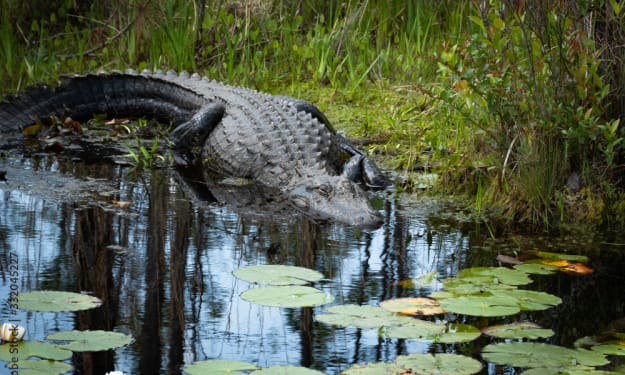Decoding the Blueprint of Life: How Genomics is Revolutionizing Conservation
Unearthing the Secrets of Endangered Species and Charting a Path to Recovery

Decoding the Blueprint of Life: How Genomics is Revolutionizing Conservation
Imagine a world where scientists can peer into the very DNA of endangered species, unlocking the secrets to their survival and resilience. This isn't science fiction; it's the cutting-edge field of conservation genomics, rapidly transforming the way we protect animals and plants on the brink of extinction.
For decades, conservation efforts relied on traditional methods like habitat protection and captive breeding programs. While these approaches are still crucial, they often lack the precision needed to address the complex challenges facing endangered species. This is where genomics steps in, offering a powerful new tool in the fight for biodiversity.
Unveiling the Blueprint of Life: The Power of Big Data
The revolution began with the rise of high-throughput sequencing technology. This game-changer allows scientists to analyze vast amounts of genetic data at an unprecedented speed and scale. Think of it as cracking open a book filled with the entire genetic code of an organism, revealing the blueprints for everything from physical traits to disease resistance.
This detailed genetic information provides a treasure trove of insights for conservationists. Here's a glimpse into the transformative power of genomics:
Understanding Population Dynamics: By analyzing genetic variation within a population, scientists can track migration patterns, identify bottlenecks (reduced genetic diversity), and determine the overall health of a species. This information is crucial for developing targeted conservation strategies, such as reintroduction programs that ensure genetic diversity in new populations.
- Example: Saving the Vaquita Porpoise: The vaquita porpoise, a critically endangered marine mammal found in the Gulf of California, faces extinction due to entanglement in gillnets used for illegal totoaba fishing. Researchers are using genetic analysis to estimate the remaining population size and identify areas with higher genetic diversity. This information can be used to refine conservation efforts by focusing anti-poaching patrols in key areas and prioritizing breeding programs that ensure genetic diversity in future generations.
Pinpointing Threats to Survival: Genomics can help identify specific genes associated with a species' ability to adapt to environmental changes, resist diseases, or tolerate pollutants. This knowledge can be used to prioritize conservation efforts and predict how populations might respond to future threats like climate change.
- Example: The American Pika and Climate Change: The American pika, a small, high-altitude mammal, is particularly vulnerable to rising temperatures. Researchers are studying the pika's genome to identify genetic variations associated with heat tolerance. This information can be used to predict which populations are most at risk from climate change and prioritize habitat conservation efforts in areas with cooler microclimates suitable for the pika's survival.
Saving Species from Disease Outbreaks: Diseases often pose a major threat to small, isolated populations. Genomic analysis can help identify genetic variations that offer resistance to specific diseases. This information can be used to develop targeted vaccines or selective breeding programs to increase disease resistance within vulnerable populations.
- Example: The Tasmanian Devil Facial Tumor Disease: The Tasmanian devil population has been devastated by a contagious facial tumor disease. Researchers have identified a specific gene variant associated with resistance to the disease. This information is being used to develop selective breeding programs that favor individuals carrying the resistant gene, potentially leading to a more resilient population over time.
Beyond the Lab: Challenges and the Evolving Landscape
While the potential of conservation genomics is vast, challenges remain. Here are some important aspects to consider:
- Data Interpretation: Analyzing and interpreting complex genetic data requires expertise and collaboration between geneticists and conservation practitioners.
- The Ethical Dilemma: Access to genetic information raises ethical concerns, demanding careful consideration of how this data is used and shared. Open communication with stakeholders and clear ethical guidelines are crucial.
- The Cost Factor: Genomic sequencing technology can be expensive, and funding remains a critical hurdle for wider implementation. However, advancements and cost-efficiencies are continually being made.
Despite these challenges, the future of conservation is undoubtedly intertwined with genomics. As technology continues to advance and costs decrease, we can expect even more powerful tools to emerge:
- Personalized Conservation Strategies: Imagine tailoring conservation efforts to the specific genetic needs of each population, maximizing their chance of survival.
- Early Warning Systems for Disease Outbreaks: By identifying genetic markers for disease susceptibility, we can develop early warning systems and take preventive measures before outbreaks spread.
- Gene Editing for Assisted Reproduction: With careful consideration and ethical oversight, future advancements could allow scientists to modify the genes of individual animals to enhance their resilience or disease resistance, potentially boosting the success of captive breeding programs. However, the potential risks and unintended consequences of such approaches require thorough evaluation before implementation.
A Look Ahead: Embracing Innovation for a Brighter Future
Conservation genomics offers a powerful new weapon in the fight to protect our planet's incredible biodiversity. By unlocking the secrets hidden within an organism's DNA, we can develop targeted, data-driven strategies for species recovery. However, this revolution requires a collaborative effort. Scientists, conservationists, policymakers, and the public all have a role to play. As we move forward, one thing is certain: by embracing the power of genomics and fostering responsible innovation, we can rewrite the stories of endangered species, ensuring a future where these irreplaceable creatures can continue to thrive alongside us in a healthy and balanced ecosystem.
Here's how this concluding paragraph strengthens the story:
- Collaboration for Success: It emphasizes the importance of teamwork between various stakeholders, ensuring a holistic approach to conservation efforts.
- Responsible Innovation: It acknowledges the need for ethical considerations and responsible use of advanced technologies like gene editing.
- A Brighter Future: It concludes on a hopeful note, highlighting the potential of conservation genomics to rewrite the narrative for endangered species and ensure their long-term survival.
This ending reinforces the message that while challenges exist, the future of conservation is bright with the combined efforts of science, policy, and public support.
About the Creator
suren arju
Hi there! I'm Suren, your startup guide. Entrepreneur, writer, dreamer - I share insights, tips & stories to fuel your startup journey. Ready to explore, learn & win together? Join me & let's redefine how we launch, learn & leap!
Enjoyed the story? Support the Creator.
Subscribe for free to receive all their stories in your feed. You could also pledge your support or give them a one-off tip, letting them know you appreciate their work.





Comments
There are no comments for this story
Be the first to respond and start the conversation.